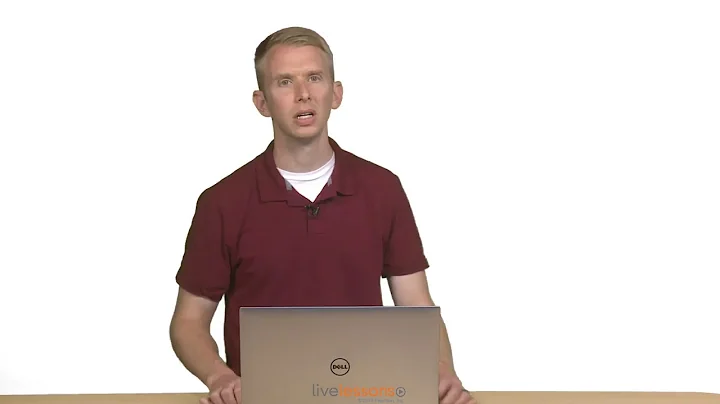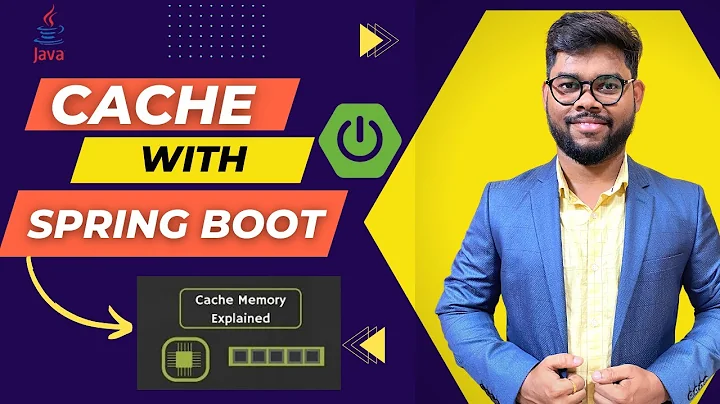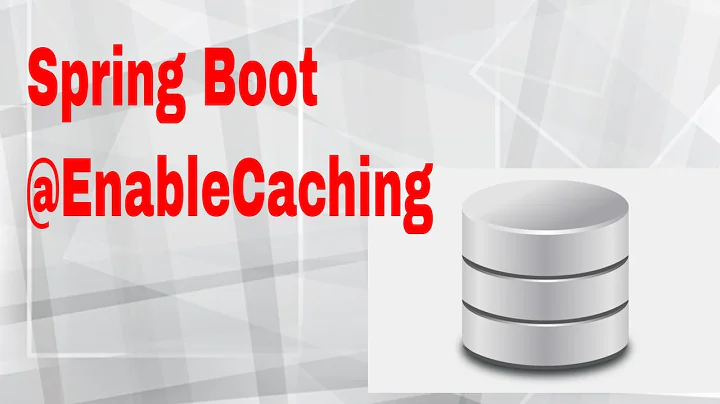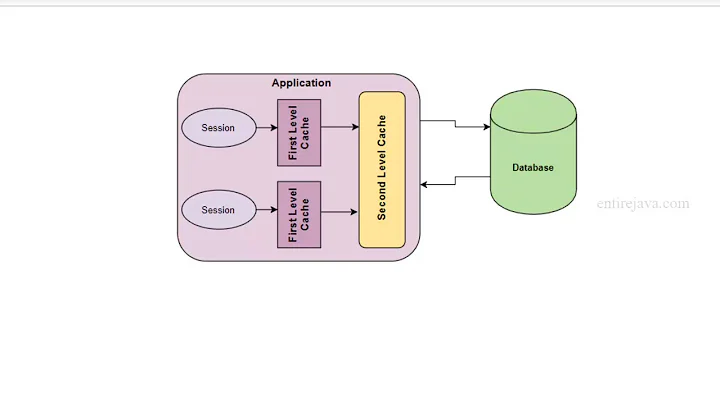Spring Cache @Cacheable - not working while calling from another method of the same bean
Solution 1
I believe this is how it works. From what I remember reading, there is a proxy class generated that intercepts all requests and responds with the cached value, but 'internal' calls within the same class will not get the cached value.
From https://code.google.com/p/ehcache-spring-annotations/wiki/UsingCacheable
Only external method calls coming in through the proxy are intercepted. This means that self-invocation, in effect, a method within the target object calling another method of the target object, will not lead to an actual cache interception at runtime even if the invoked method is marked with @Cacheable.
Solution 2
Since Spring 4.3 the problem could be solved using self-autowiring over @Resource annotation:
@Component
@CacheConfig(cacheNames = "SphereClientFactoryCache")
public class CacheableSphereClientFactoryImpl implements SphereClientFactory {
/**
* 1. Self-autowired reference to proxified bean of this class.
*/
@Resource
private SphereClientFactory self;
@Override
@Cacheable(sync = true)
public SphereClient createSphereClient(@Nonnull TenantConfig tenantConfig) {
// 2. call cached method using self-bean
return self.createSphereClient(tenantConfig.getSphereClientConfig());
}
@Override
@Cacheable(sync = true)
public SphereClient createSphereClient(@Nonnull SphereClientConfig clientConfig) {
return CtpClientConfigurationUtils.createSphereClient(clientConfig);
}
}
Solution 3
The example below is what I use to hit the proxy from within the same bean, it is similar to @mario-eis' solution, but I find it a bit more readable (maybe it's not:-). Anyway, I like to keep the @Cacheable annotations at the service level:
@Service
@Transactional(readOnly=true)
public class SettingServiceImpl implements SettingService {
@Inject
private SettingRepository settingRepository;
@Inject
private ApplicationContext applicationContext;
@Override
@Cacheable("settingsCache")
public String findValue(String name) {
Setting setting = settingRepository.findOne(name);
if(setting == null){
return null;
}
return setting.getValue();
}
@Override
public Boolean findBoolean(String name) {
String value = getSpringProxy().findValue(name);
if (value == null) {
return null;
}
return Boolean.valueOf(value);
}
/**
* Use proxy to hit cache
*/
private SettingService getSpringProxy() {
return applicationContext.getBean(SettingService.class);
}
...
See also Starting new transaction in Spring bean
Solution 4
Here is what I do for small projects with only marginal usage of method calls within the same class. In-code documentation is strongly advidsed, as it may look strage to colleagues. But its easy to test, simple, quick to achieve and spares me the full blown AspectJ instrumentation. However, for more heavy usage I'd advice the AspectJ solution.
@Service
@Scope(proxyMode = ScopedProxyMode.TARGET_CLASS)
class AService {
private final AService _aService;
@Autowired
public AService(AService aService) {
_aService = aService;
}
@Cacheable("employeeData")
public List<EmployeeData> getEmployeeData(Date date){
..println("Cache is not being used");
...
}
public List<EmployeeEnrichedData> getEmployeeEnrichedData(Date date){
List<EmployeeData> employeeData = _aService.getEmployeeData(date);
...
}
}
Solution 5
If you call a cached method from same bean it will be treated as a private method and annotations will be ignored
Related videos on Youtube
Comments
-
Bala over 2 years
Spring cache is not working when calling cached method from another method of the same bean.
Here is an example to explain my problem in clear way.
Configuration:
<cache:annotation-driven cache-manager="myCacheManager" /> <bean id="myCacheManager" class="org.springframework.cache.ehcache.EhCacheCacheManager"> <property name="cacheManager" ref="myCache" /> </bean> <!-- Ehcache library setup --> <bean id="myCache" class="org.springframework.cache.ehcache.EhCacheManagerFactoryBean" p:shared="true"> <property name="configLocation" value="classpath:ehcache.xml"></property> </bean> <cache name="employeeData" maxElementsInMemory="100"/>Cached service :
@Named("aService") public class AService { @Cacheable("employeeData") public List<EmployeeData> getEmployeeData(Date date){ ..println("Cache is not being used"); ... } public List<EmployeeEnrichedData> getEmployeeEnrichedData(Date date){ List<EmployeeData> employeeData = getEmployeeData(date); ... } }Result :
aService.getEmployeeData(someDate); output: Cache is not being used aService.getEmployeeData(someDate); output: aService.getEmployeeEnrichedData(someDate); output: Cache is not being usedThe
getEmployeeDatamethod call uses cacheemployeeDatain the second call as expected. But when thegetEmployeeDatamethod is called within theAServiceclass (ingetEmployeeEnrichedData), Cache is not being used.Is this how spring cache works or am i missing something ?
-
Dewfy almost 11 yearsare you use same value for
someDateparam? -
Bala almost 11 years@Dewfy Yes, it is same
-
 Alex K over 5 yearsPossible duplicate of Spring cache @Cacheable method ignored when called from within the same class
Alex K over 5 yearsPossible duplicate of Spring cache @Cacheable method ignored when called from within the same class
-
-
Shawn D. almost 11 yearsWell, if you make the second call Cacheable as well, it'll only have one cache miss. That is, only the first call to getEmployeeEnrichedData will bypass the cache. The second call to it would used the previously-cached return from the first call to getEmployeeEnrichedData.
-
Bala almost 11 yearsWhat is "static weaving"? google doesn't help much. Any pointers to understand this concepts ?
-
Dewfy almost 11 years@Bala - just for example on our project we use
<iajccompiler (from ant) that resolves all necessity aspects for cache-able classes. -
Coder over 8 yearscould you give an example with AspectJ ?
-
 VAdaihiep over 7 years@Bala I have same issue, my solution is move
VAdaihiep over 7 years@Bala I have same issue, my solution is move@Cacheableto DAO :( If you have better solution please let me know, thanks. -
 DOUBL3P over 6 yearsyou also can write a Service e.g. CacheService and put all your to cache methods into the service. Autowire the Service where you need and call the methods. Helped in my case.
DOUBL3P over 6 yearsyou also can write a Service e.g. CacheService and put all your to cache methods into the service. Autowire the Service where you need and call the methods. Helped in my case. -
SingleShot over 6 yearsAccessing the application context, e.g.
applicationContext.getBean(SettingService.class);, is the opposite of dependency injection. I suggest avoiding that style. -
molholm over 6 yearsYes it would be better to avoid it, but I do not see a better solution for this problem.
-
radistao about 6 yearsSince Spring 4.3 this could be solved using
@Resourceself-autowiring, see example stackoverflow.com/a/48867068/907576 -
Madbreaks over 5 yearsTried this under
4.3.17and it didn't work, calls toselfdon't go through a proxy and the cache is (still) bypassed. -
Tomas Bisciak almost 5 yearsWorked for me. Cache hits. I use latest spring dependencies as of this date.
-
 2mia almost 5 yearsam I the only one thinking this breaks patterns, looks like a singleton mix, etc etc?
2mia almost 5 yearsam I the only one thinking this breaks patterns, looks like a singleton mix, etc etc? -
Deepan Prabhu Babu over 4 yearsi used spring boot starter version - 2.1.0.RELEASE, and i had the same issue. This particular solution worked like a charm.
-
anand almost 4 yearsAlso the external
@Cacheablemethod should bepublic, it doesn't work on package-private methods. Found it the hard way. -
 jaco0646 almost 4 yearsThis answer is a duplicate of stackoverflow.com/a/34090850/1371329.
jaco0646 almost 4 yearsThis answer is a duplicate of stackoverflow.com/a/34090850/1371329. -
 Chandresh Mishra over 3 yearsWill, it does not create a cyclic dependency?
Chandresh Mishra over 3 yearsWill, it does not create a cyclic dependency? -
amstegraf about 3 yearsmost if not all of the annotations in spring are done through aop which is by proxy class, thus this calls don't work, because of course calling a method within means you don't go through the proxy anymore
-
 Dexter Legaspi about 3 yearsthis is the way.
Dexter Legaspi about 3 yearsthis is the way. -
jnnnnn almost 2 yearsSpring 5 crashes: "Relying upon circular references is discouraged and they are prohibited by default. Update your application to remove the dependency cycle between beans."













![Spring Cache Tutorial with EhCache [How to update the cache?] | Spring Cache | Spring Tutorial](https://i.ytimg.com/vi/pzPLeq6nSs0/hq720.jpg?sqp=-oaymwEcCNAFEJQDSFXyq4qpAw4IARUAAIhCGAFwAcABBg==&rs=AOn4CLDJEAVeklh9bN9Se6XiszcG8D1Jrw)
